Minh Mang is the 2nd ruler of the Nguyen dynasty, the king of Vietnam from 1820 to 1840. His contributions to the country can’t be counted, including the largest territory Vietnamese ever occupied, formed in his time. Many people believe that he is the most successful emperor of the house. This is why it draws plenty of Vietnamese tourists who admire him and history buffs.
Like other king’s tombs, Minh Mang tomb is not far away from Hue city centre. Travelers can get it by all road vehicles conveniently, and even by boat on the Perfume river. As a perfect combination between architecture and landscape, here visitors will see magnificent buildings embraced by extremely pretty hills, lakes and gardens. Yes, this feature makes Minh Mang tomb popular to those who look for stunning Instagram pictures. Compared to the tomb of Khai Dinh king, it expresses more Vietnamese traditional spirits and design.
In this article, we fully introduce the tomb of Minh Mang king and everything that travelers need to know about it.
Read also:
- Tomb of Tu Duc King
- Tomb of Khai Dinh King
- Tomb of Gia Long King
- Tomb of Thieu Tri King

Table of content
- 1 An Overview of Minh Mang Emperor’s Tomb
- 2 About Minh Mang King (the 2nd King of Nguyen Dynasty)
- 3 Minh Mang Tomb Entrance Fee and Tickets
- 4 Opening Hours of Minh Mang Tomb
- 5 Minh Mang Tomb History
- 6 Minh Mang Tomb Dress Code
- 7 What to See in the Tomb of Minh Mang King?
- 8 Minh Mang Tomb Location and How to Get There
- 9 Hue Day Trip from Da Nang or Hoi An
- 10 Minh Mang Tomb Map
- 11 Related Posts
- 12 Thieu Tri Tomb: The Peaceful Royal Tomb of Hue
- 13 Bach Ma National Park: Hiking, Trekking in Da Nang and Hoi An
- 14 Hue to Da Nang By Train: The Best Train Ride in Vietnam
- 15 Hue Royal Tombs: A Complete Guide and What is Best?
- 16 The Hue Abandoned Water Park (Thuy Tien Lake Waterpark)
- 17 Minh Mang Tomb Complete Visitor Guide
- 18 Tu Duc Tomb Complete Visitor Guide
- 19 Hoi An or Hue: Which is Better?
- 20 Lang Co Vietnam Travel Guide
- 21 Thien Mu Pagoda: Guide to Hue’s Most Famous Buddhist Temple
- 22 Perfume River Cruise: Guide to Best Boat Tour in Hue Vietnam
- 23 Tomb of Khai Dinh: The Most Unique Royal Tomb of Hue
- 24 Hai Van Pass Da Nang: Map, Route, Weather, History, Tour
- 25 Hue Imperial City and Forbidden City
- 26 Featured Tours and Experiences
- 26.0.1 Golden Bridge and Ba Na Hills Night Tour
- 26.0.2 Golden Hands Bridge Tour In Sunrise or Sunset (1/2 Day)
- 26.0.3 Cam Kim Island Bicycle Tour From Hoi An
- 26.0.4 Cham Island Tour From Hoi An (Group Tour)
- 26.0.5 Cham Island Tour From Da Nang (Group Tour)
- 26.0.6 Hoi An Vegetarian Food Tour
- 26.0.7 Hoi An Evening Walking Food Tour Through Laneways
- 26.0.8 Private Hoi An Basket Boat Tour (Shuttle Bus, Bicycle, Bike)
- 26.0.9 Half-day Am Phu Cave Tour (Private)
- 26.0.10 Hoi An Countryside Tour (Bicycle, Car, Electric Shuttle)
- 26.0.11 Da Nang Tour Package From Singapore
- 26.0.12 Hoi An Evening Tour From Da Nang with Lantern Boat Ride
- 26.0.13 Hoi An Walking Food Tour Through Laneways
- 26.0.14 My Son Sanctuary and Hoi An Old Town Tour with Thu Bon River Cruise
- 26.0.15 My Son Day Trip From Hoi An including Marble Mountains and Basket Boat
- 26.0.16 Half Day Hoi An City Tour With River Cruise
- 26.0.17 Son Tra Peninsula Tour with Marble Mountains (Private/Small Group)
- 26.0.18 Hue Day Trip From Hoi An with Hai Van Pass, River Cruise & Lunch
- 26.0.19 Hoi An Ancient Town and Countryside Tour (Bests of Hoi An Tour)
- 26.0.20 Hoi An Tour From Da Nang Airport (Private, Optional Lunch)
- 26.0.21 Hoi An Day Trip From Da Nang (Marble Mountains, Basket Boat, Old Town)
- 26.0.22 Da Nang City Tour From Airport (Private, Optional Lunch)
- 26.0.23 Hoi An City Tour with Lantern Class, Lantern Boat, Night Market & Local Food Sampling
- 26.0.24 Marble Mountains, Basket Boat Ride & Hoi An Old Town Walking Tour
- 26.0.25 Marble Mountains & Golden Bridge/Ba Na Hills Day Tour
- 26.0.26 Marble Mountains & Monkey Mountain Tour (Half-day, Private)
- 26.0.27 Private Golden Bridge Sunrise Tour (Half-day, Optional Lunch)
- 26.0.28 Hoi An Ancient Town & Golden Bridge Day Tour (Private/Small Group)
- 26.0.29 My Son Sanctuary & Golden Bridge/Ba Na Hills Day Tour
- 26.0.30 Private My Son Sanctuary Sunrise or Sunset Tour
- 26.0.31 Full Day Hoi An Ancient Town & Countryside Experience With Local
- 26.0.32 Full Day My Son Sanctuary & Hoi An Countryside Tour With Local
- 26.0.33 Full Day Hoi An Ancient Town & Coconut Village Experience
- 26.0.34 Son Tra Peninsula, Marble Mountains and Hoi An City Tour
- 26.0.35 Half-day Marble Mountains Tour from Da Nang or Hoi An
- 26.0.36 Da Nang Cave Tour (Half Day Underground Tour in Da Nang)
- 26.0.37 Hoi An Old Town & Lantern Making Class (Morning Tour, Half-day)
- 26.0.38 Full Day Bests of Da Nang & Hoi An Old Town Walking Tour
- 26.0.39 Full Day My Son Tour From Da Nang with Da Nang City Tour
- 26.0.40 My Son Sanctuary Tour From Hoi An or Da Nang With Local Guide
An Overview of Minh Mang Emperor’s Tomb
Minh Mang Tomb (or Tomb of Minh Mang King, Hieu Lang, Lang vua Minh Mang) is one of the most visited royal tombs in Hue. It’s the burial place for Minh Mang – the 2nd emperor of the Nguyen dynasty who ruled Vietnam for 20 years, from 1820 to 1840. Its construction began in September 1840 and was continued by Minh Mang’s oldest son – Thieu Tri king after his sudden death.
Overlooking the confluence of two rivers, Minh Mang tomb is well-known for its magnificent traditional-style buildings perfectly set into a picture-like scenery. It has inspired many generations of Vietnamese people and artists up to this date. Designed by its owner himself, people can know about his own personality, worldwide and likings although not so much.
In 1993, the tomb of Minh Mang emperor was inscribed by Unesco to be a world heritage site, as a component of the Complex of Hue monuments. No Hue city tours exclude it in their itinerary because it’s really worth seeing and even shooting nice photos.
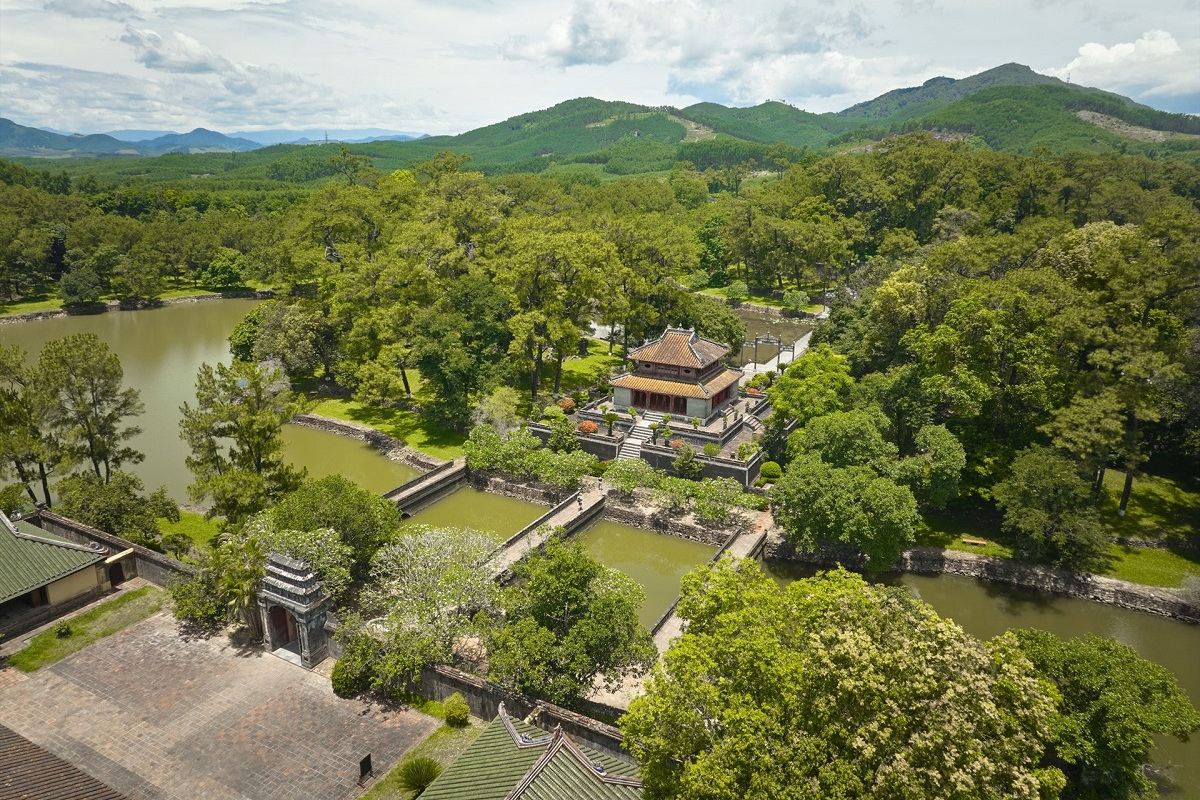
About Minh Mang King (the 2nd King of Nguyen Dynasty)
Before Coronation: Nguyen Phuc Dam Prince
Nguyen Phuc Dam is the 4th son of Gia Long king. He’s borned in 1791 in Gia Dinh (now Ho Chi Minh city) while his father did not unify the country and established the Nguyen dynasty yet. His mother is Thuan Thien queen, the 2nd wife of Gia Long king and the daughter of Tran Hung Dat, a high-ranking official in the government.
Traditionally, Nguyen Phuc Dam was not the choice to become a king. In the beginning, the oldest son of Gia Long king (Nguyen Phuc Canh prince) will be chosen to be his successor. However, this Catholic prince died prior to his father’s death, when he was just 22 (in March 1801). Smallpox is the reason. Two months later, his younger brother – Nguyen Phuc Hy lost at the age of 20, in the Thi Nai battle, the most intense navy battle between Gia Long’s army and Tay Son troops. Nguyen Phuc Tuan – the next son of Gia Long passed away due to a disease. So, after all, Nguyen Phuc Dam became a priority option and was educated well to succeed his father’s throne.
During Minh Mang Emperor’s Reign
In 1820, Nguyen Phuc Dam was crowned in Thai Hoa palace within the Imperial city. He became the 2nd emperor of the Nguyen dynasty, and ruled the country for the next 20 years (until his death). Vietnam under his governance became one of the strongest empires in Southeast Asia.
These are some important milestones in his reign:
– Minh Mang king finalized the Vietnamese conquest of Champa kingdom. It means that the Champa king collapsed in his reign, and then Cham cities were converted into Vietnamese names. Besides, he also annexed a part of contemporary Cambodia and Laos in his country’s territory. Thus, Minh Mang extended Vietnam to the largest area ever.
– In 1831, Minh Mang king changed the name of Thang Long to Hanoi (meaning “inside of the rivers”). Hanoi now is the capital city of Vietnam.
– Minh Mang king banned missionaries and restricted westerner’s ships from entering important trading ports, such as Hoi An. In 1835, he requested them to stop at Da Nang harbour only, slowly leading to the decline of international commerce in Hoi An.
– In 1833, Minh Mang king replanned the Imperial city and continued the construction of the Citadel started by his father. Hue’s emblem – Ngo Mon gate was built in this project. The 9 Dynastic urns, the 9 Holy cannons and more made in his reign, now became a national treasure.
Minh Mang King’s Family
Minh Mang king is famous for many wifes and children. His number of wifes and concubines are not confirmed by any people or historic documents, but at least 45 of them have a kid with him. By that, he has 78 sons and 64 daughters, 142 in total. His successor – Thieu Tri king is the first son.
To recognize the kids easier, Minh Mang king composed a poem in 1823, including 20 Chinese words. It’s called De he thi. Each word would be added after Nguyen Phuc – the royal family name. Remember that this rule was applied for his sons only because Vietnamese people are patriarchal.
Minh Mang Tomb Entrance Fee and Tickets
Entrance fee of Minh Mang emperor tomb is 150,000 VND for adults and children above 12 years old. It’s just 30,000 VND for children whose age is from 7 to 12 years old, and free of charge for smaller kids. These prices are no different between Vietnamese and non-Vietnamese tourists.
If plan to visit other sights in the Complex of Hue monuments, visitors should buy comb tickets to save and for convenience. The validity is 2 days. The ticket including 3 sites (the Imperial city, Minh Mang tomb, Tu Duc tomb), costs 420,000 VND and 80,000 VND respectively. The prices of the 4-sites ticket (the Imperial city, Minh Mang tomb, Tu Duc tomb, Khai Dinh tomb) is 530,000 VND and 100,000 VND. A QR code is printed on the ticket, so please take a picture to ensure that if lost, you can use it to enter the paid places.
Besides on the site, visitors can browse the official webpage of the Hue monuments conservation center, and buy tickets online there.
Tour guide service is available with a price of 100,000 VND. English and Vietnamese guides are easiest to book, and for other languages, please contact and reserve in advance.
Opening Hours of Minh Mang Tomb
Tomb of Minh Mang king opens from 7:30 am to 5 pm every single day, including weekends and national holidays of Vietnam. Other famous royal tombs of Hue have the same opening hours too.
We recommend arriving at the Minh Mang tomb earlier than 4 pm. By that, visitors have enough time to sightsee around, photograph and learn about history. Thankfully, this mausoleum has so many trees and lakes, it’s less hot than other Hue’s ancient monuments. Early morning or late afternoon is the best time to visit Minh Mang tomb in the day.
Minh Mang Tomb History
Right after crowned in 1840, Minh Mang king requested the geomancers in his government to look for a good piece of land for his mausoleum. It must fulfill feng shui principles and be around the mountainous area in the upstream of the Perfume river where his ancestors were buried. Because Minh Mang is extremely careful, 14 years later, he decided to choose current place amongst many recommendations. He also designed his tomb by himself, based on his in-depth knowledge about Asian philosophies, religions and architectural art.
Generally, Minh Mang tomb sits in Cam Khe mountain, near the confluence of Ta Trach and Huu Trach rivers at the source of the Perfume river. He believed that this position brings peace, and his next generations would be blessed by heaven.
Minh Mang tomb construction started in September 1840. According to history books, 3,000 soldiers and builders worked here at the same time, under the management of Truong Dang Que and Ha Duy Phien officials. However, after 8 months, in January 1841, the king passed away suddenly. Because the mausoleum was still unfinished, his body was preserved in the Imperial city and waited. This is the reason to explain why the kings soonly prepared their burial place when they just sat on the throne.
After the coronation in the next month, Thieu Tri king – Minh Mang’s first son continued the construction. He used 10,000 people to keep building, and still followed the original design of the father. In April 1841, the worshipping temple and its decoration were done. In July in the same year, the official national funeral ceremony was held to honour Minh Mang emperor. Meanwhile, the coffin of the king was carried into the Sepulchre and then it’s closed permanently. Somebody says that he is buried with a huge collection of valuable things. Until 1843, the rest of the mausoleum – pavilions, houses, hills, forests and lakes were totally completed.
Minh Mang Tomb Dress Code
Travelers have to wear respectively if visit Minh Mang tomb. To make it simple, remember to get clothings that armpits, navel and knees are covered. People wearing too short garments will be not allowed to enter until they follow this dress code. The site managers encourage traditional costumes of Vietnamese, such as ao dai (the long dress). Rental is available in some places near the tomb or the ticket counter.
For the visit, please prepare sun cream, sunglasses, hat/cap/umbrella, good shoes and bottles of water once leaving the hotel. In the rainy season, don’t forget rain poncho or jacket or umbrella, and waterproof shoes and extra clothings are highly recommended. Of course, check the weather forecast before you go!
What to See in the Tomb of Minh Mang King?
Note: All constructions of Minh Mang tomb are arranged along a 700-meters-long axis. Visitors just need to walk straight away to go from one building to the other. To head back to the parking, we recommend going by lakeside paths to skip steps up and down.
Entrance Gate, Mandarin Courtyard and Stele Pavilion
Minh Mang tomb has three gates: Dai Hong Mon (‘the Great Red Gate’) in the middle, Huu Hong Mon (‘the Right Red Gate’) to the left and Ta Hong Mon (‘the Left Red Gate’) to the right if seen from outside. The main entrance opens one time only in history when people carry Minh Mang’s coffin into the tomb. Now, it’s closed, so visitors have to enter by the gate to the right. From the ticket counters, just walk straight.
After a small bridge, that is the Mandarin courtyard where two lines of stone statues are placed. Each line has 7 statues of elephant (one), horse (one), military mandarins (three) and literature mandarins. They serve the dead emperor in the next world.
From the surroundings, the Stele pavilion rises up and it preserves Thanh Duc Than Cong stele. 2,500 Mandarin Chinese letters are carved on this 3-meters-tall piece of hard stone, to praise Minh Mang king by his successor – Thieu Tri king. Information about the process to build the tomb is also mentioned. If don’t see, visitors can walk around the pavilion and don’t have to climb stairs.
Sung An Palace
On the highest terrace behind the Stele pavilion, Sung An palace is accessed by Hien Duc gate. This three-arched gate was built in 1843, and renovated by sponsors from the World monuments fund and the Vietnam national coal and mineral industries group from 2008 to 2010. It’s reopened to the public to commemorate 35-years Hue’s liberation day (26th March 1975).
In fact, Sung An palace is a compound of a temple at the centre and 4 buildings around it. Before going to the temple, visitors can see Ta Tung Tu and Huu Tung Tu, two small shrines to worship officials who worked for Minh Mang king. The house to the right exhibits documentation and pictures about the emperor himself and his tomb. Like any other imperial worshipping place, people have to remove hats, sun glasses and cover if want to come inside. Its interior is reddish and densely decorated, featuring dragons representing the emperor and poems composed by him. Taking photos and videos are prohibited here.
Behind the temple, there are two other houses, Ta Tung Phong and Huu Tung Phong, built between 1840 and 1843. King’s wifes, court ladies, eunuchs and other servants will stay in these buildings, to maintain ceremonies. In a close distance, Hoang Trach Mon (gate) is popular for instagrammers. From here, it’s possible to view a colorful pavilion rising from the surroundings which is filled by lush flowers and trees. And sure, a great backdrop. The most iconic picture about the tomb is taken at this spot.
Minh Lau Pavilion
From the back of the Temple, visitors need to go downstairs, across a small bridge and then upstairs to reach the Minh Lau pavilion. Built in 1841, its name is to praise the talent, contribution and morality of the king. Here, he takes a rest before coming to the next world. That’s why people place a wooden counter where his soul can descend (from the heaven) and relax on it.
There are two tall towers standing near the pavilion, depicting two candles. The gardens behind it are designed in “longevity” letters. Sago palms (thousands-years tree in Vietnamese) and pines are planted around, also expressing the wish that Minh Mang tomb can survive permanently.
The Tomb of Minh Mang King
The tomb of Minh Mang king is at the end of the axis. It includes two rounded walls to protect the burial site (sepulchre), all sitting on a low hill that looks like an upside down bowl. Location of the sepulchre where the emperor’s coffin was buried, it’s still a secret. Its natural setting signifies that Minh Mang king has a good resting place. His head (the tomb) and shoulder lean the hills, while his hands, legs and body just relax on lower terrain. He also enjoys watching two tributaries of the Perfume river as well as such peaceful villages and gardens in the surroundings. Thus, Minh Mang mausoleum’s design is unique, creative and expresses its owner’s worldview.
To get to the tomb, visitors will go downstairs from Minh Lau pavilion. After that, go through 2 metal gates in the beginning and end of a stone-paved bridge. This bridge divides a lake which looks like a crescent soon (while the tomb likes a sun). Painted enamels on the gates are colorful, including Chinese letters saying about the king’s personality.
Other Constructions
On the top of hills circling the lake, there are constructions with different functions. After the war, all of them no longer stand on the ground and a few remains are seen today. One of them is to raise deers. Some of them are for relaxation and viewing the scenery. If would like to get there and see, visitors only need to follow lakeside paths.
In fact, the Minh Mang king aims to build (or use) 7 hills in his plan. They represent stars of the Big Dipper or the Universe in general where he actually stays after death.
Minh Mang Tomb Location and How to Get There
Location of Minh Mang Tomb
Tomb of Minh Mang emperor is in Huong Tho commune, Huong Tra town. It’s 15 kilometers away from Hue city centre (Phu Xuan bridge) and the Imperial city in the Ancient citadel. The distance from Khai Dinh tomb and Tu Duc tomb to Minh Mang tomb are 5,5 km and 9 km respectively.
By Car and Taxi
For families and groups, traveling to Minh Mang tomb from Hue city centre by car is most suitable. It takes travelers around 20 minutes and a little bit more if the traffic is high. The cost will be from 200,000 to 300,000 VND for one way. We recommend booking a car for a full trip, not just an attraction, to save time and money. Text us in whatsapp number +84968009827 for further details and to book a private car with an English speaking driver.
Read also: Hue Private Car and Driver
By Motorbike
Solo travelers often ride a motorbike to reach Minh Mang tomb and other sights in the same direction. It’s cheaper than taking cars or tours. One day rental at the moment ranges from 100,000 to 200,000 VND, depending on the type of the bike (automatic will be expensive). Gasoline is excluded, but seriously, it’s cheap in Vietnam (around 1 US dollar for one liter).
The quickest way to get from Hue city centre to Minh Mang tomb is via QL49 road. On the map, it’s also known as the Minh Mang road, and starts from Nam Giao altar. After passing by Thieu Tri tomb, travelers will go along the Perfume river until Cau Tuan bridge. Here, the highways and expressways intersect, so please pay attention when entering the bridge and ride down to QL19 again. Following it, uphill and then downhill, travelers see a crossroad with a sign showing the direction to the tomb. One more time, the Perfume river is on the side of the road (to the right). Parking is 3,000 VND and the staff gives a bill as verification later. Don’t believe the maps because the route may be longer and more difficult to navigate.
Boat to Minh Mang Tomb
Minh Mang tomb is by the river, so travelers definitely can get it by boat from the city. A boat tour on the Perfume river will include it and other historical sites (Thien Mu pagoda, Hon Chen temple) to complete a day.
Hue Day Trip from Da Nang or Hoi An
In one day, it’s possible to organize a trip going from Da Nang or Hoi An to Hue. In Hue, Vietnam’s former capital city, travelers will visit the Imperial city, the Forbidden purple city, Thien Mu pagoda and a tomb to learn about history. In the morning, before the tomb, Hai Van pass and Lang Co lagoon are stopovers to allow enjoying nature and taking pictures. The pass is nationally famous for its winding road between the high mountains and the sea. Lunch is served with Vietnamese and local dishes, and the guide is informative to better understand the places. Please see more details in our Hue day trip from Da Nang or Hoi An.
Minh Mang Tomb Map
Related Posts
Thieu Tri Tomb: The Peaceful Royal Tomb of Hue
Thieu Tri emperor tomb is an unpopular place to visit in Hue. From the city centre, it’s closer than Khai Dinh tomb, Minh Mang tomb and Gia Long tomb, and
Bach Ma National Park: Hiking, Trekking in Da Nang and Hoi An
Two best places for trekking and hiking in and near Da Nang are Son Tra mountain (peninsula) and Bach Ma national park. Which one is better is actually personal because these
Hue to Da Nang By Train: The Best Train Ride in Vietnam
Like Hanoi to Sapa, many travelers choose to get from Hue to Da Nang by train. Not just a cheap deal, the experience on this ride is definitely stunning and
Hue Royal Tombs: A Complete Guide and What is Best?
The Nguyen dynasty existed 143 years, from 1802 to 1945 with 13 emperors, but only 7 of them had their own mausoleum. On the map, all of these buildings are
The Hue Abandoned Water Park (Thuy Tien Lake Waterpark)
Recently, the Abandoned water park in Hue is known by travelers worldwide thanks to social media and online magazines, just like the Golden hands bridge in Da Nang. It was
Minh Mang Tomb Complete Visitor Guide
Minh Mang is the 2nd ruler of the Nguyen dynasty, the king of Vietnam from 1820 to 1840. His contributions to the country can’t be counted, including the largest territory Vietnamese
Tu Duc Tomb Complete Visitor Guide
Tomb of Tu Duc emperor is one of three most visited royal mausoleums in Hue. Two others are Minh Mang tomb – the tomb of Tu Duc king’s grandfather and
Hoi An or Hue: Which is Better?
Both Hoi An and Hue cities are in the middle of Vietnam, and they’re not far from each other (about 130 km). Therefore, for those who travel from north to
Lang Co Vietnam Travel Guide
Lang Co was a lovely backwater town nestled at the foot of spectacular Hai Van Pass for some decades. Not yet widely known because of the popularity of beaches in
Thien Mu Pagoda: Guide to Hue’s Most Famous Buddhist Temple
Thien Mu Pagoda is in the itinerary of any Hue city tours and day trips from Da Nang or Hoi An, because of its various interests. In short, it’s really
Perfume River Cruise: Guide to Best Boat Tour in Hue Vietnam
Perfume River cruise is a popular activity in Hue, Vietnam. Different from other sightseeing rides, this experience is by a dragon boat that was used only for the king formerly.
Tomb of Khai Dinh: The Most Unique Royal Tomb of Hue
Tomb of Khai Dinh is the last emperor mausoleum built in Hue and Vietnam. It’s famous for one-of-the-kind architecture and art that was never seen in the country at that
Hai Van Pass Da Nang: Map, Route, Weather, History, Tour
Truong Son or Annamite Range is the most dramatic mountain ridge in Vietnam. When it juts out into the sea, spectacular Hai Van Pass is formed. This amazing sculpture of
Hue Imperial City and Forbidden City
Located by the Perfume River, Hue Imperial City and Forbidden City are the 2nd and 3rd walls of the Citadel, seat of Vietnamese power from 1802 to 1945. These are home of luxury-decorated palaces,


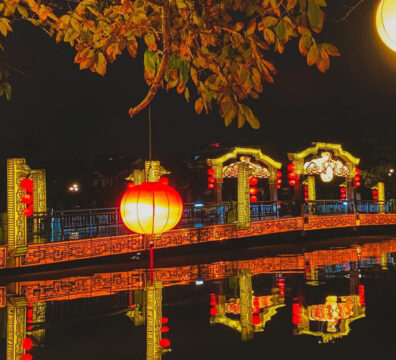


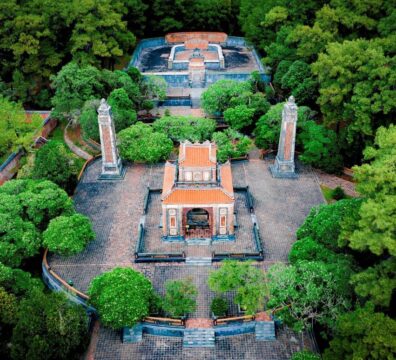











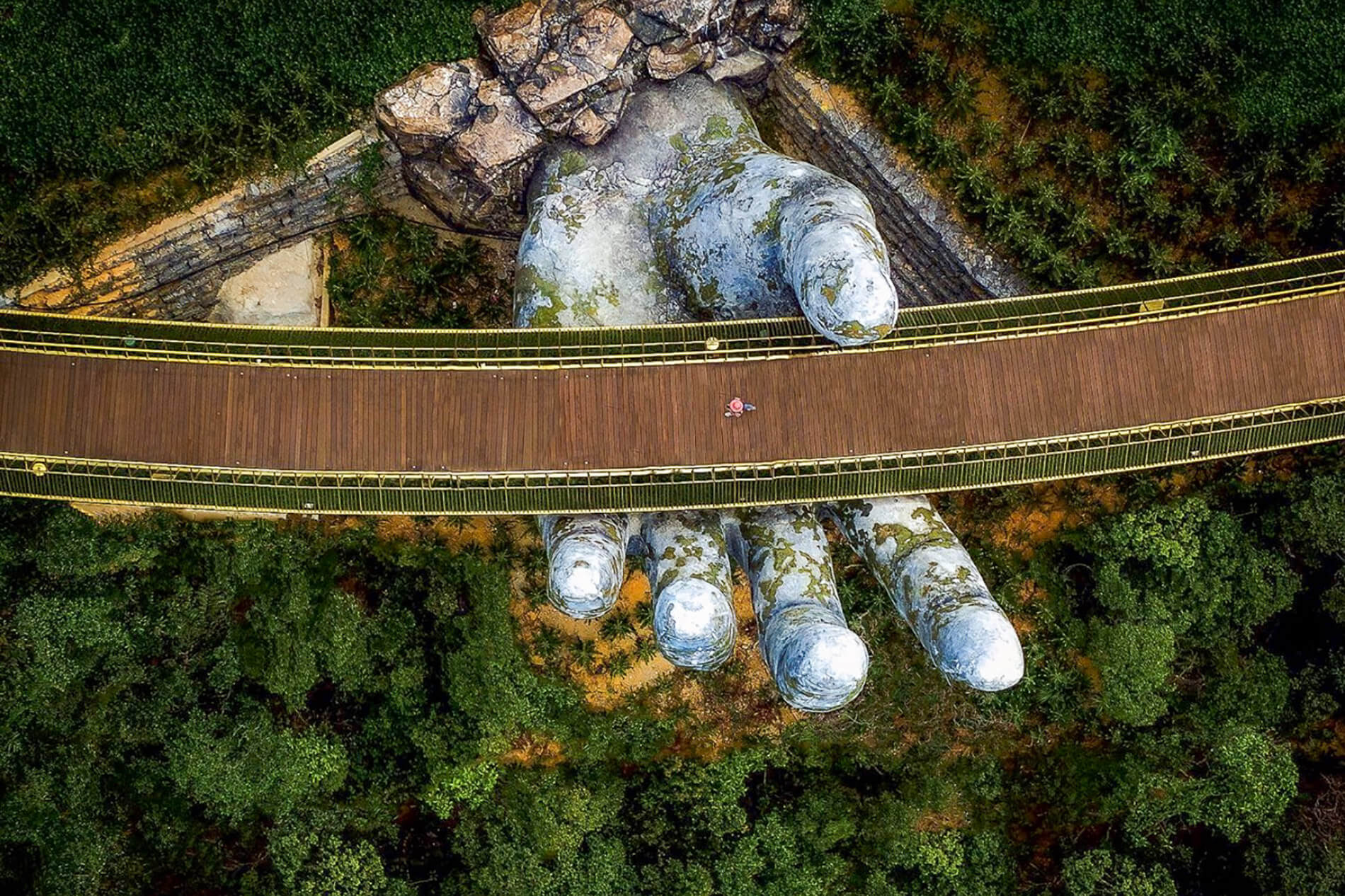

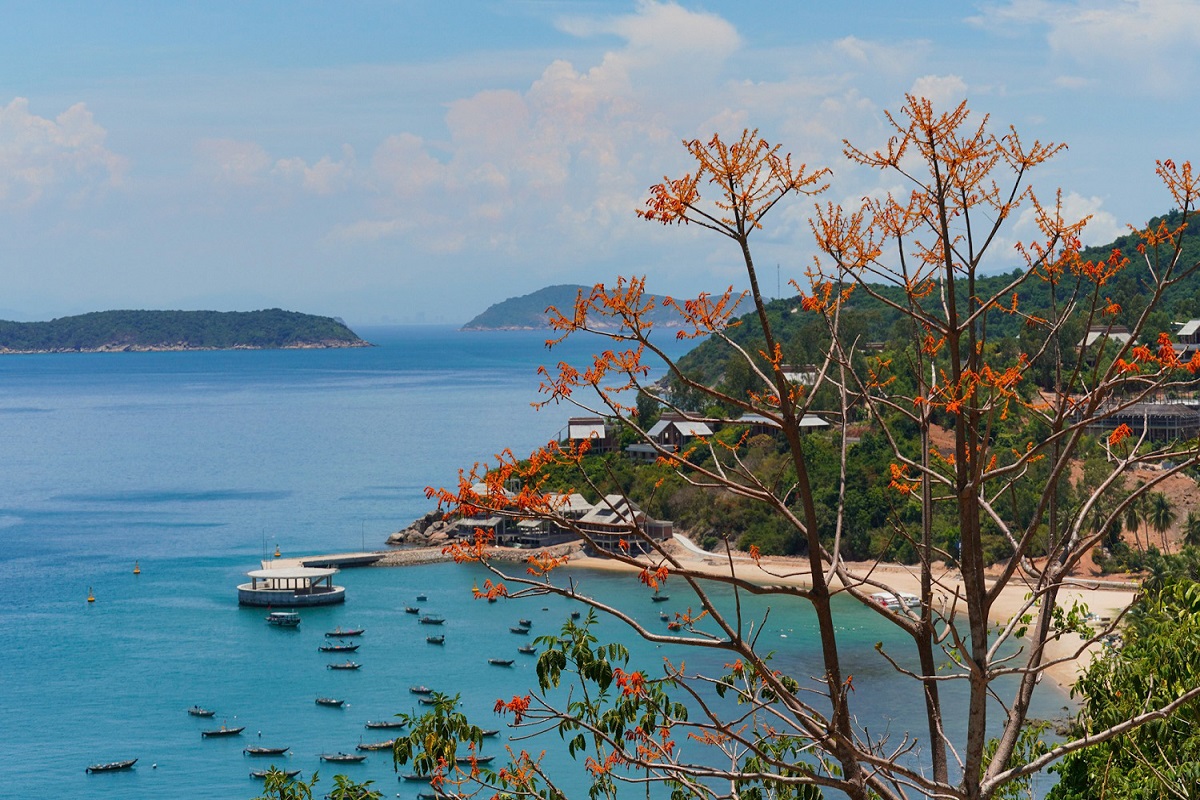







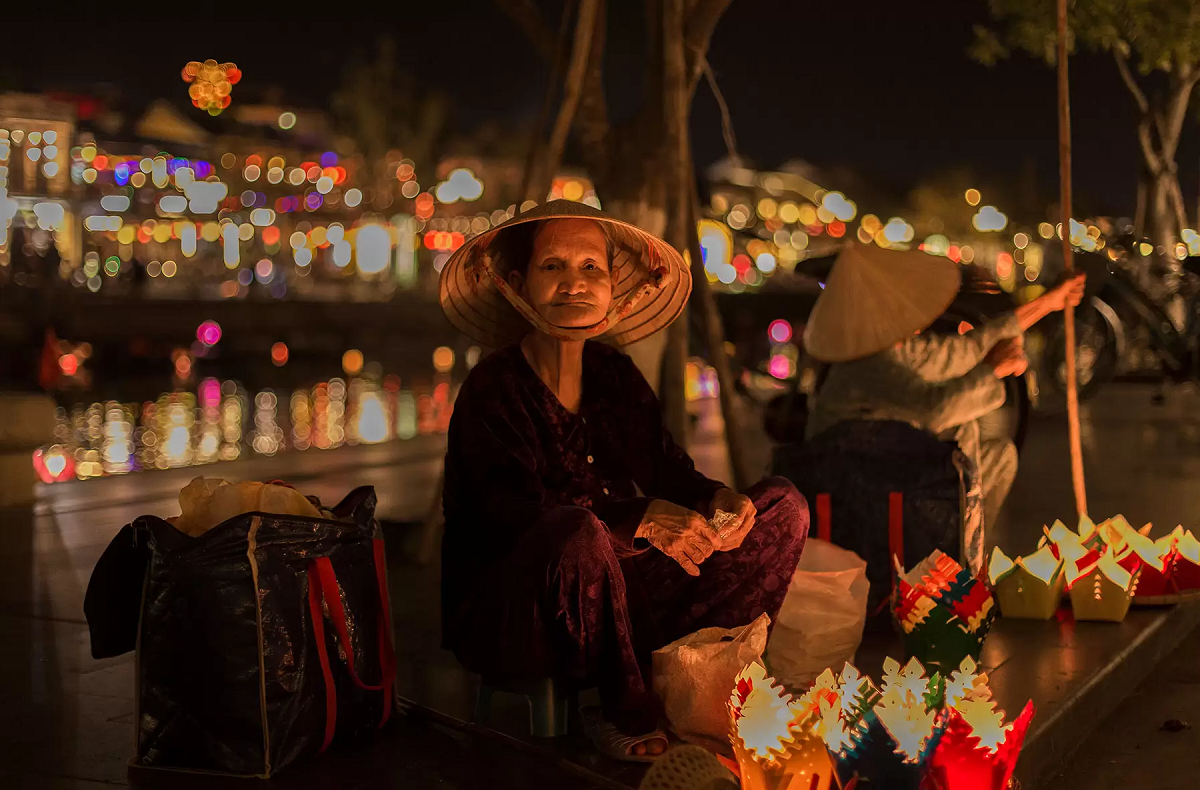

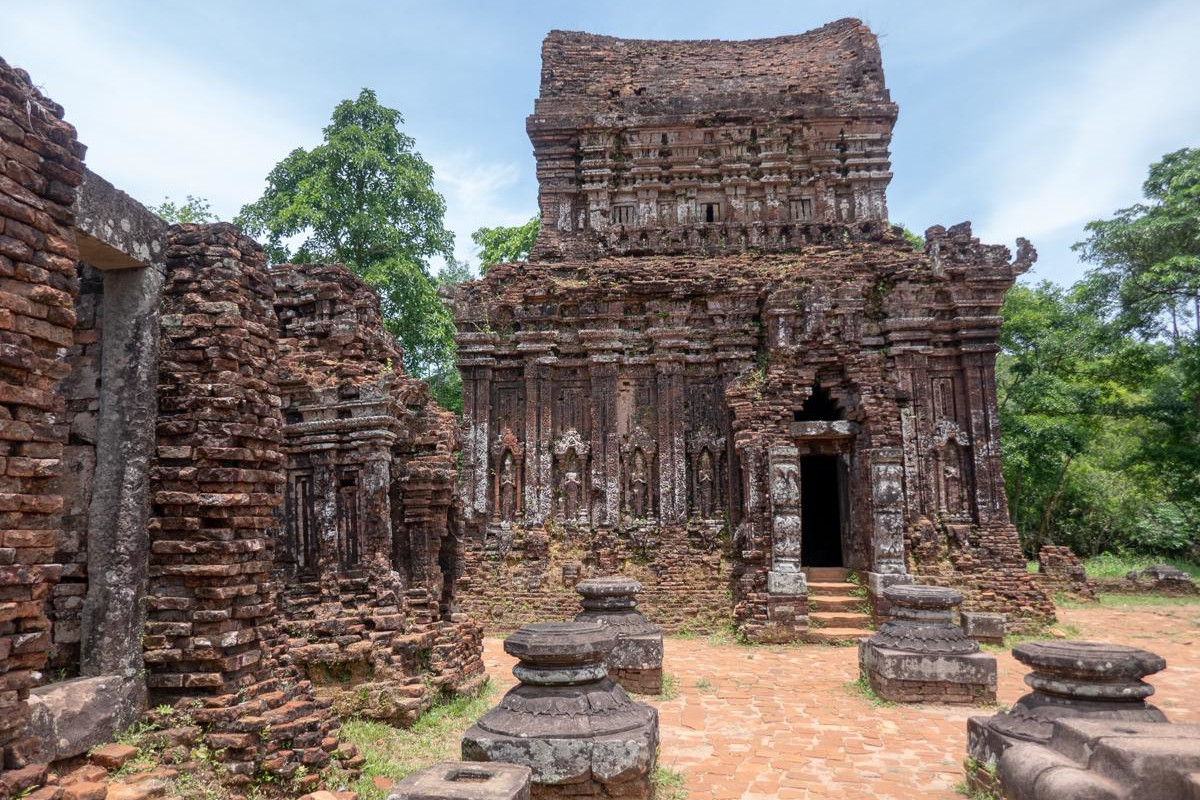

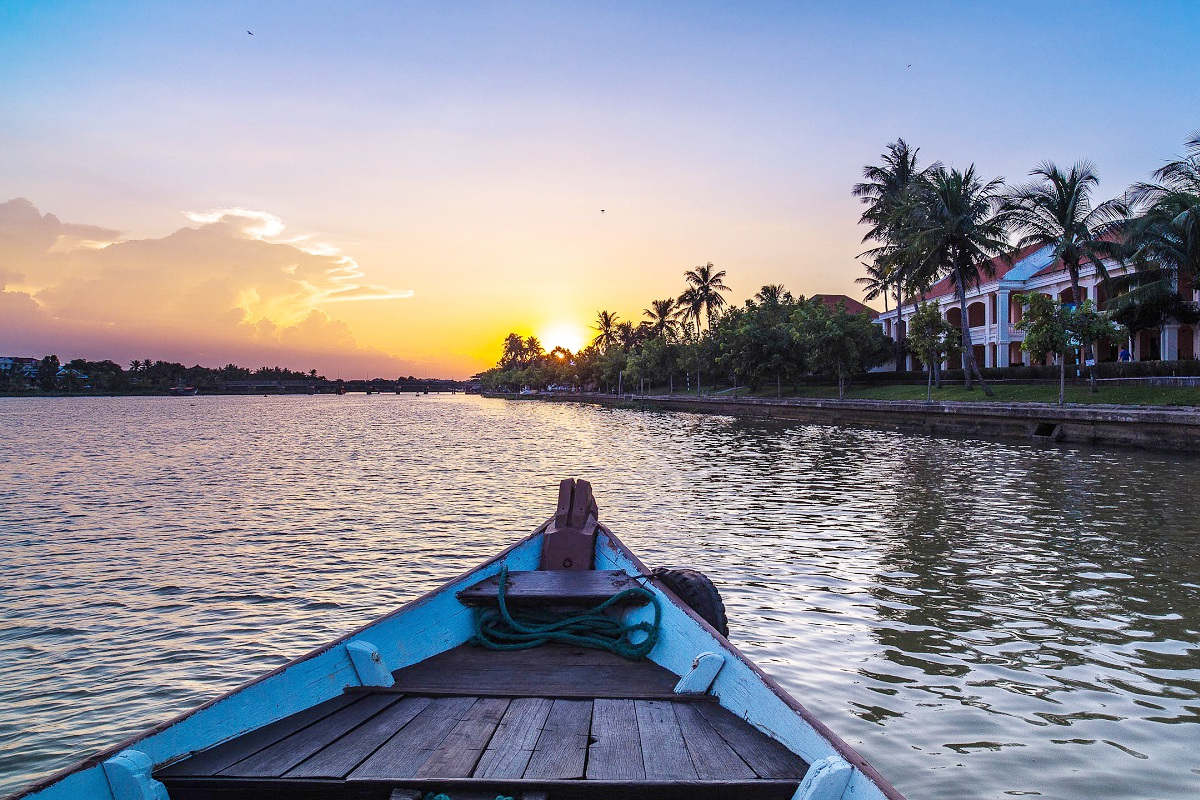





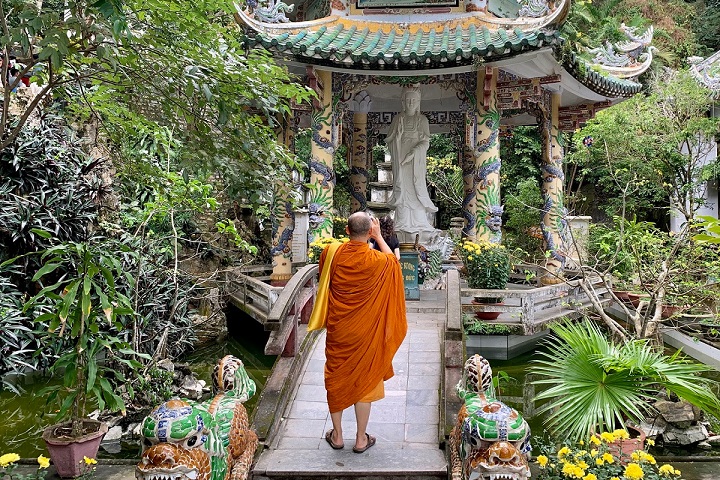


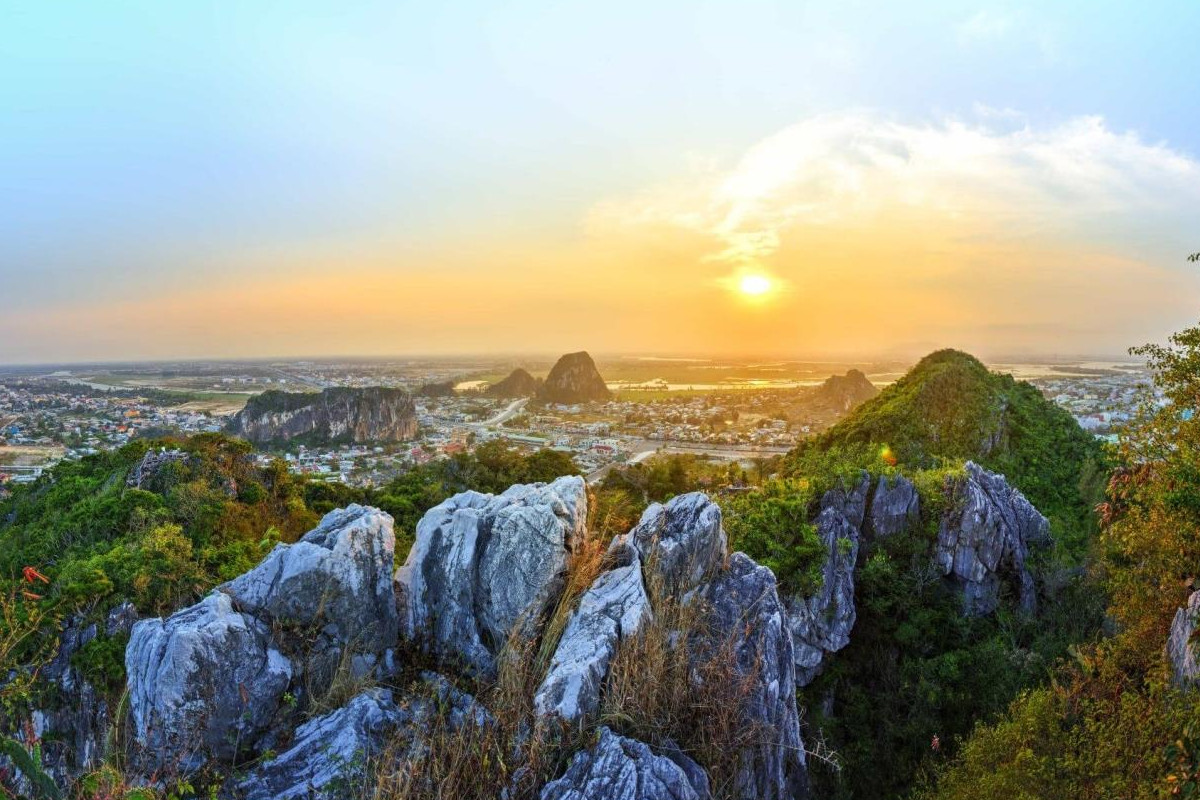

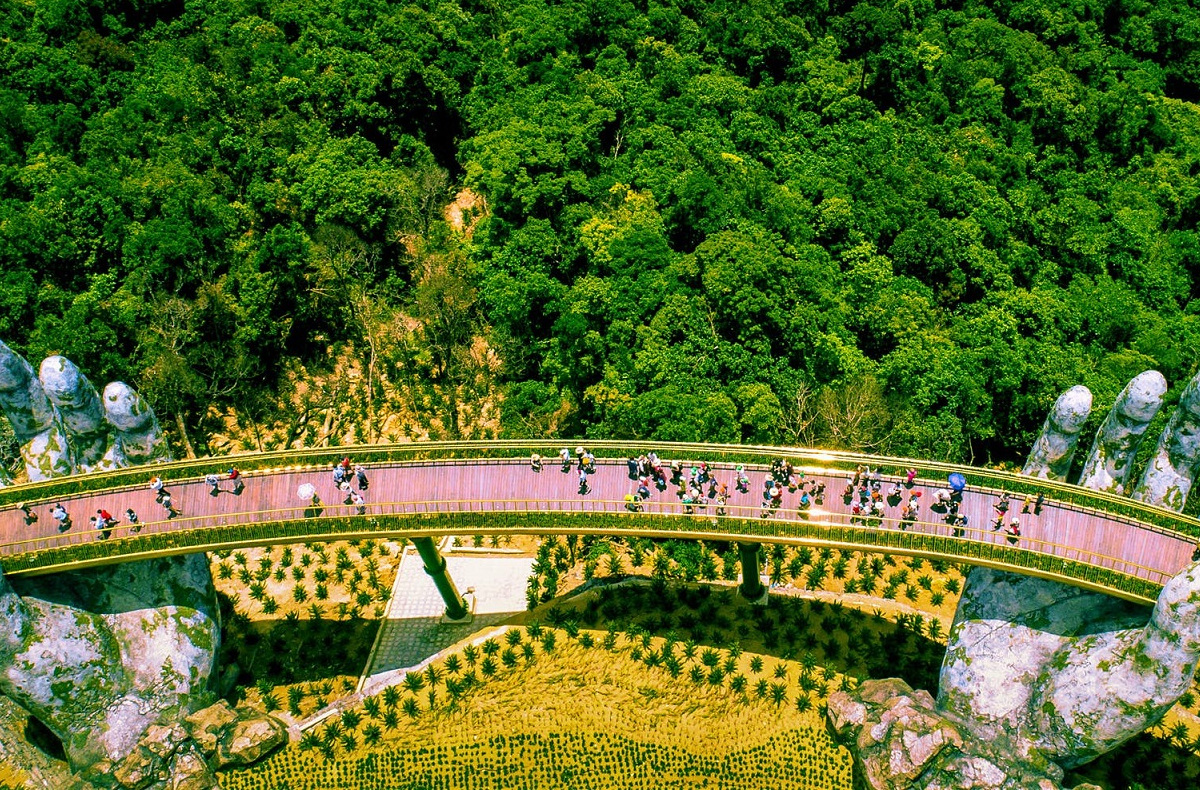















Leave a Reply